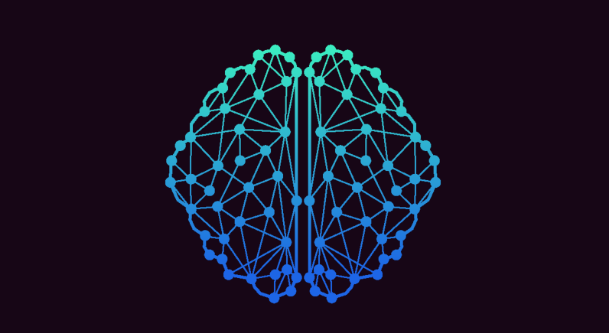In the new age of work, businesses are swimming (and drowning) in data. But it is both amusing and ironic that they are struggling to find an adequate volume of high-quality data for testing and analytics. Data is critical for companies as they rely on it for decision-making, but getting high-quality data in the appropriate volume is onerous. This article looks at the ways for determining the right volume of data for analytics and remediations for data scarcity.
Determining the Right Volume of Data Required for an AI Model
Data scientists are always concerned about the impact of insufficient data on the performance of AI models. It is challenging to ascertain how much data is required to develop an excellent AI model with the highest possible accuracy. The volume of data needed depends on various parameters like the complexity of the problem statement, the number of categories to predict, and the algorithm used to solve the problem at hand. Data scientists use their experience and a gamut of incisive methods to determine the minimum required volume of data for AI. The most widely used techniques to determine the volume of data are mentioned below:
1. Statistical Heuristic
Statistical heuristic procedures are conventional methods used to estimate the sample size requirement for building models. In the case of classification problems, the size requirement is generally a function of the number of features, the number of classes, the model parameters, or a combination of all of these. These techniques are simple, and the sample size requirement is a multiple of the number of classes, features, or parameters. The multiplication factor generally varies across different models.
2. Published Research on a Similar Problem Statement
It is increasingly becoming easier to identify a pre-solved problem that uses data similar to the complexity at hand. The availability of academic, industry-related research literature and the popularity of open website communities like Kaggle and GitHub are growing exponentially. Such resources give insights into data set requirements, cleaning and scaling standards, and the performance of the AI model. These insights majorly help businesses in identifying the sample size requirement.
3. Understanding of Learning Curve
The computational cost of training a model is a function of the sample size of the training data. While it is ideal to have a large dataset to train the model, the performance accuracy of the model sees diminishing improvements with increasing sample size. The learning-curve sampling method continuously monitors and compares the costs and performance, while a larger dataset trains the model in real-time. The training terminates when the costs outweigh the benefits. The cost-benefit assessment method might also vary for different datasets and applications.
4. Type of Algorithm
A few machine learning algorithms inherently need a smaller sample size as compared to the others. Non-linear algorithms generally require a comparatively larger training dataset as compared to linear algorithms. While working with non-linear algorithms, some deep learning algorithms improve their skill, accuracy, and performance when trained with more data. If a linear algorithm can achieve good performance with 100s of observations, non-linear algorithms like neural networks, random forest, AdaBoost, etc., will need 1000s and are more computationally intensive.
5. Getting as much data as Possible
Irrespective of the model, a larger dataset that covers all possible scenarios in abundance is preferred. Machine learning is a process of induction, and it is always better to include edge cases in the dataset for training to avoid model failure and inaccuracy. Some problems may inherently require big data and sometimes even all that data that you have. Despite all the determination techniques, it is always good to have as much data as possible.
After estimating the required data points to create a suitable model to address the problem, it is critical to ensure that the training data is sufficient and follows the 4Vs of Big Data (Volume, Velocity, Variety, and Value). This brings up the question: what to do in case data is insufficient to train the model?
Solving the Problem of Insufficient Data through Synthetic Data Generation
Gartner estimates that by 2024, 60% of data used for developing AI and analytics projects will be synthetically generated. Synthetic data is created artificially instead of being derived from actual events. Synthetic data increases the volume of the dataset and matches the sample data by extracting the statistical properties of the primary dataset. Along with ease, synthetic data offers various other advantages: it enhances the robustness of the AI model and ensures the privacy of data. Organizations deal with highly-sensitive data on an everyday basis, frequently comprising Personally Identifiable Information (PII) and Personal Health Information (PHI). Synthetic data help protect PII and PHI and get high-performing and accurate AI models.
Data scientists very commonly use synthetic data to deal with data deficits and enhance the quality of data. Numerous compliances restrict organizations from collecting, sharing, and disposing of personal data. However, with the help of synthetic data generation techniques, organizations can share data with ease with no legal infringement.
Synthetic Data Generation using Infosys Enterprise Data Privacy Suite (iEDPS)
Infosys PrivacyNext aims to build a Privacy First Organization leveraging global talent, strategic partnerships, and best-in-class privacy-enhancing technologies to minimize data risk. The platform is powered by Infosys Enterprise Data Privacy Suite (iEDPS).
iEDPS provides enterprise-class data privacy capabilities and enables an organization to adhere to global regulatory standards such as GDPR, CCPA, HIPAA, PIPEDA, GLBA, ITAR, other global and local regulations.
Loaded with deterministic, selective, dynamic, and static masking features, Data Discovery, and Data Generation capabilities, iEDPS can be deployed on any platform and supports all major databases and file systems.
iEDPS has over 70 algorithms to generate synthetic data of desired quantity and quality for the organization’s analytics needs. It helps organizations protect their sensitive data and enhance the quality of their data for the Artificial Intelligence model.
Data generation capabilities of iEDPS allow parameterization and tuning to enhance the quality of data generated for AI and testing needs. It enables flexibility to preserve the statistical properties of the data and conditional generation based on the other variables of the dataset. It helps generate clean data without worrying about the outliers and solves the problem of underfitting in models. A data scientist might also come across the difficulty of overfitting models very often while using training data. iEDPS helps in creating a clean and high-quality training data set to address overfitting, and at the same time, improves the performance and robustness of the AI model. The various algorithms the iEDPS facilitates are thoroughly researched and validated, keeping in mind the AI and testing needs.











